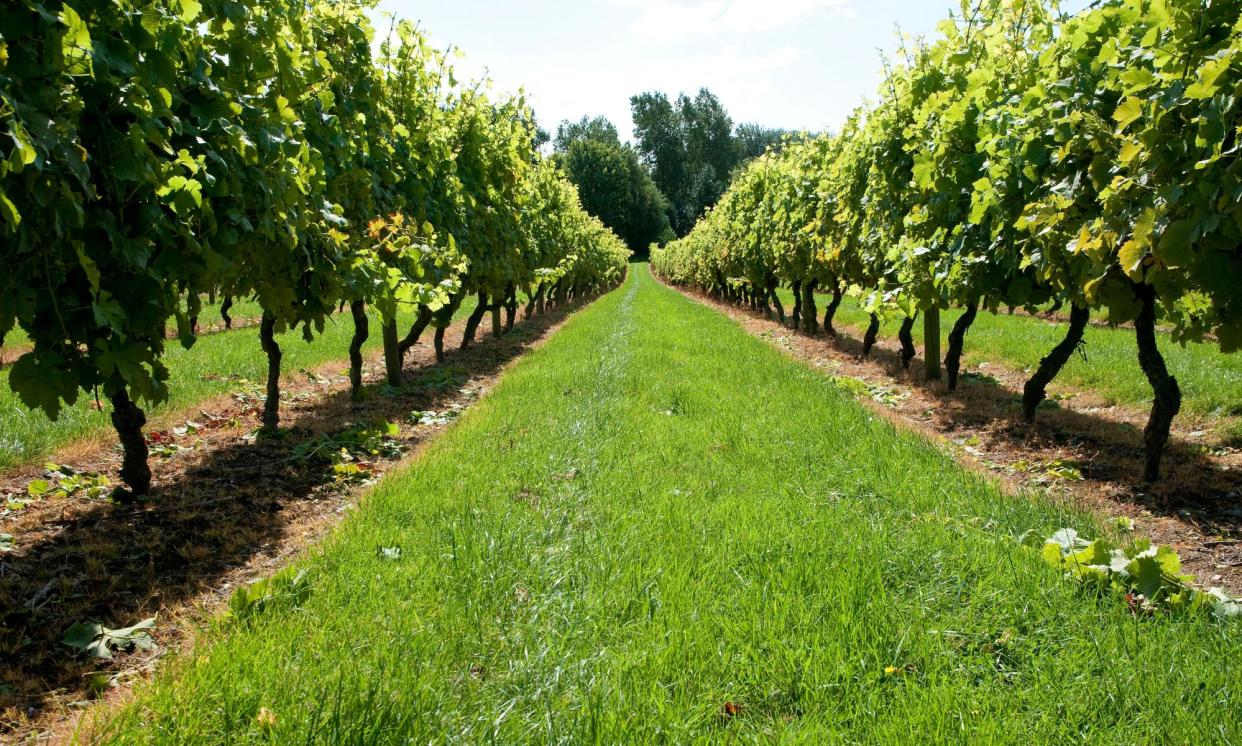How City high-flyers have helped to fuel UK wine-growing boom

The UK’s booming wine-growing industry has been compared to “California in the 70s”, with annual production more than doubling to 12m bottles a year, according to a report.
There has been a boom in the number of smaller growers driven by high-flying City workers taking early retirement to try something new, while well-known wine houses from elsewhere in Europe have snapped up English vineyards or blocks of land to plant vines, in part to mitigate against climate risks, said Will Banham, a partner at the property company Knight Frank in charge of viticulture.
The area of the UK planted with vines has soared by 75% over the past five years to almost 4,047 hectares (10,000 acres) and production has soared by 130% to more than 12m bottles a year, according to the latest rural report from Knight Frank.
There are now about 950 UK vineyards, with more than 100 in Wales, across the south from Kent to Cornwall, and stretching to Yorkshire and Scotland.
Banham was recently told by an American investor, who was looking to buy a site for a vineyard in the UK: “They saw the English wine sector now in the same way that California had been in the 70s, right before significant loads of inward investment came in.” In the western US state, home to the Napa Valley wine region, a burgeoning industry was transformed into a global leader as vineyard acreage increased dramatically in the following decades.
Britain’s wine industry is still small and concentrated in southern England, but rising temperatures create better growing conditions for grapes. At the same time, grape production in more traditional wine-producing countries such as France, Spain and Portugal is under threat from extreme heat, drought and wildfires amid the climate crisis. “There are some areas, particularly in the French wine world, that have had very poor harvests this year,” Banham said.
Symington Family Estates, one of Portugal’s top wine producers, teamed up with Britain’s oldest fine wine merchant Berry Bros & Rudd last year to buy Hambledon, England’s oldest commercial vineyard, which first planted vines in 1952. They described the £22m acquisition as “an important mitigation against the risk of climate change”.
Pommery and Taittinger, two of France’s best-known champagne houses, bought land and planted vines in England about a decade ago, while the world’s biggest sparkling wine producer, Germany’s Henkell Freixenet, snapped up the English wine estate Bolney in 2022. The first English sparkling wine from Taittinger’s Domaine Evremond will go on sale next spring.
A debt squeeze, because of a long period of high UK interest rates, means that there are more potential vineyard sellers in the market, Knight Frank said.
Britain’s biggest wine producer, Chapel Down, said in June it was considering raising cash and even putting itself up for sale to fund more vineyards and build a new winery in a booming industry transformed by rising temperatures and tax breaks.
The new wine growers are often professionals who have quit jobs in the City, such as hedge fund managers, solicitors and corporate lawyers, buying land typically owned by existing small vineyard owners or farmers looking to sell off excess land.
Plantable, chalky English vineyard land tends to sell for between £16,000 and £25,000 an acre while it costs £14,000 to £15,000 an acre to plant vines, trellis, fence and under drain if necessary. An established vineyard typically sells for £35,000 to £40,000 an acre.
The former office workers are “all wanting to find something new to get their teeth into,” Banham said. “Most of them are looking for blocks of land to buy and plant … in the 10- to 30-acre range.”
Among them is the former hedge fund boss Mark Driver, who with his wife, Sarah, created the Rathfinny vineyard on a former farm in Sussex in 2010 to make sparkling wine.
Tom and Elisha Cannon, who both worked in the City, launched the rosé brand Folc in 2020, at the start of the Covid-19 pandemic, after mulling the idea for several years. “I identified that there could be a huge opportunity for producing high-quality English rosé should we be able to ripen the grapes sufficiently here in the UK. Hence we dived into the world of English wine and haven’t looked back,” he said.
For the small growers, selling wine wholesale to supermarkets is going to be tough, Banham said, and some are looking at opening a cafe or restaurant at the vineyard, doing tours and selling directly to consumers.


